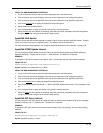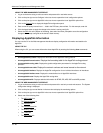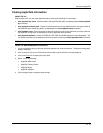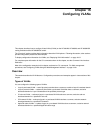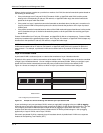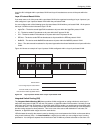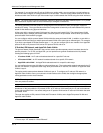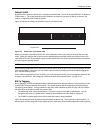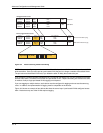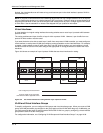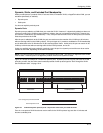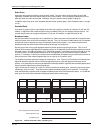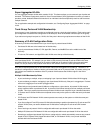
Configuring VLANs
16 - 5
Default VLAN
By default, all the ports on a device are in a single port-based VLAN. his VLAN is called DEFAULT-VLAN and is
VLAN number 1. The routing switches and the switch do not contain any protocol VLANs or IP sub-net, IPX
network, or AppleTalk cable VLANs by default.
Figure 16.3 shows an example of the default Layer 2 port-based VLAN.
Figure 16.3 Default Layer 2 port-based VLAN
When you configure a port-based VLAN, one of the configuration items you provide is the ports that are in the
VLAN. en you configure the VLAN, the device automatically removes the ports that you place in the VLAN
from DEFAULT-VLAN. oving the ports from the default VLAN, the device ensures that each port resides in
only one Layer 2 broadcast domain.
NOTE: Information for the default VLAN is available only after you define another VLAN.
Some network configurations may require that a port be able to reside in two or more Layer 2 broadcast domains
(port-based VLANs). In this case, you can enable a port to reside in multiple port-based VLANs by tagging the
port. See the following section.
If your network requires that you use VLAN ID 1 for a user-configured VLAN, you can reassign the default VLAN
to another valid VLAN ID. ee “Assigning a Different VLAN ID to the Default VLAN” on page 16-13.
802.1p Tagging
802.1p tagging is an IEEE standard that allows a networking device to add information to a Layer 2 packet in order
to identify the VLAN membership of the packet. he routing switches and the switch tag a packet by adding a
four-byte tag to the packet. The tag contains the tag value, which identifies the data as a tag, and also contains
the VLAN ID of the VLAN from which the packet is sent.
• The default tag value is 8100 (hexadecimal). This value comes from the 802.1p specification. You can
change this tag value on a global basis if needed to be compatible with other vendors’ equipment.
• The VLAN ID is determined by the VLAN on which the packet is being forwarded.
Figure 16.4 shows the format of packets with and without the 802.1p tag. The tag format is vendor-specific. To
use the tag for VLANs configured across multiple devices, make sure all the devices support the same tag format.
DefaultVLAN
T
Wh
By rem
S
T



